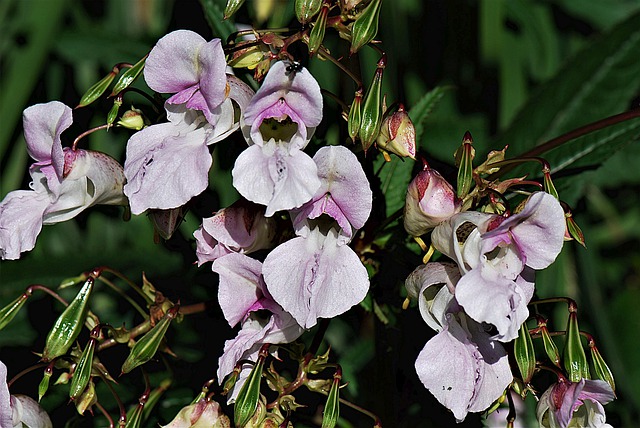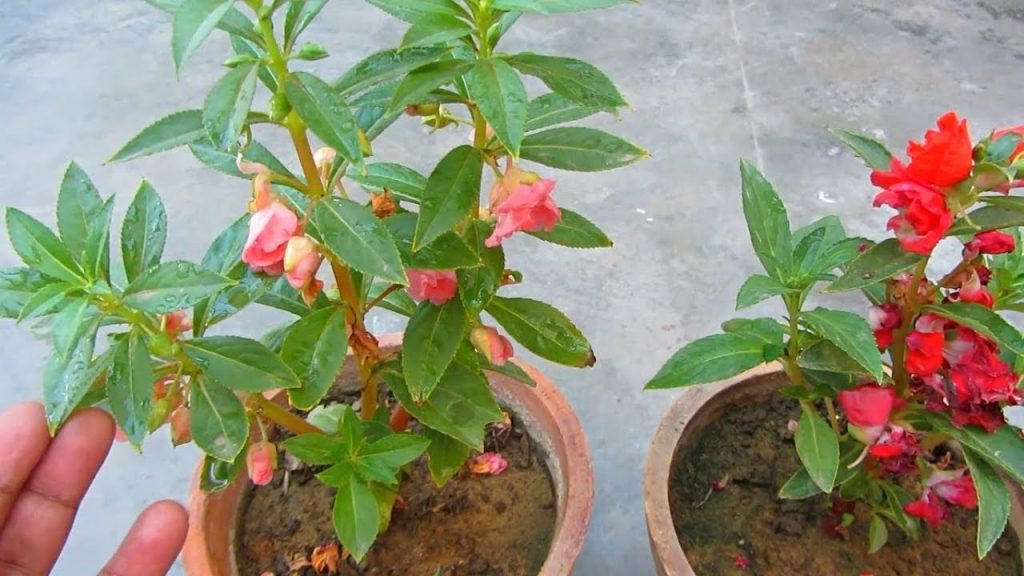Balsam plant, also called Impatiens balsamina, spotted snapweed, touch-me-not, garden balsam, or rose balsam is a simple herbaceous flowering plant.
Balsam plant leaves and seeds are the most useful parts of the plant. however, the plant leaves can be poisonous if a large quantity is consumed by animals, yet some parts of balsam like the seeds are edible.
While the balsam plant loves shade than direct sunlight, it’s not specifically an indoor plant, but you can start the germination in a large pot indoors and transplant it to your garden after some weeks.
Balsam Plant Structure
Impatiens balsamina consists of an axis that at one end becomes an underground root system and at the other end, an aerial shoot system.
This is the basic plan of the structure of all flowering plants.
Balsam Root System
The root system of the balsam consists of the main root, or tap root, from which branch roots grow.
The first set of branch roots grow sideways but the others grow in all directions.
Such a root system is called a tap root system.
Balsam Shoot System
The shoot system of balsam is made up of the stem, the leaves, the flowers, and the fruits.
Balsam leaves
The stem of the balsam is fleshy and light green in color. it is made up of bodes and internodes.
Leaves arise from the nodes and are arranged in a spiral around the stem.
Axillary buds grow from the axils of the leaves and these give rise to branches or flowers.
A terminal bud lies at the tip of the stem.
Each leaf of the balsam is a flat green structure with a toothed or serrated edge.
The tip is pointed. the leaf stalk or petiole extends through the leaf blade, or lamina, to form the mid-rib, also known as the main vein.
Branch veins with little veinlets branch out from the mid-rib to form a net venation.
The balsam leaves are medicinal and can be used in treating snakebite, constipation, gastritis, and warts.
The leaves can also be eaten as vegetables but in low quantity.
Balsam flowers
The flowers are attached to the axils of the leaves by pedicels or flower stalks.
The flower is the reproductive organ of the plant.
It has five petals which may be white, pink, red, or purple in color.
The flowers bloom in spring and frost in fall, The flowers can sometimes have spots on them or bicolor.
Balsam Seed and Fruits
When the balsam flower is fertilized, it develops into a fruit that contains seeds.
It takes less than a week for the balsam seed to germinate, and when it does, you need to expose it to sunlight for at least 12 hours daily.
To care for the seedling properly, you need to keep the soil moist during the growing season.
Balsam can grow into maturity within 3 months, it flowers in about 2 months and some days.
The fruit of the balsam plant is green and covered with small fine hairs.
The seeds are enclosed in the fruit, they are green when young and dark brown when ripe.
The ripe fruit depresses its seeds by means of an explosive mechanism.









